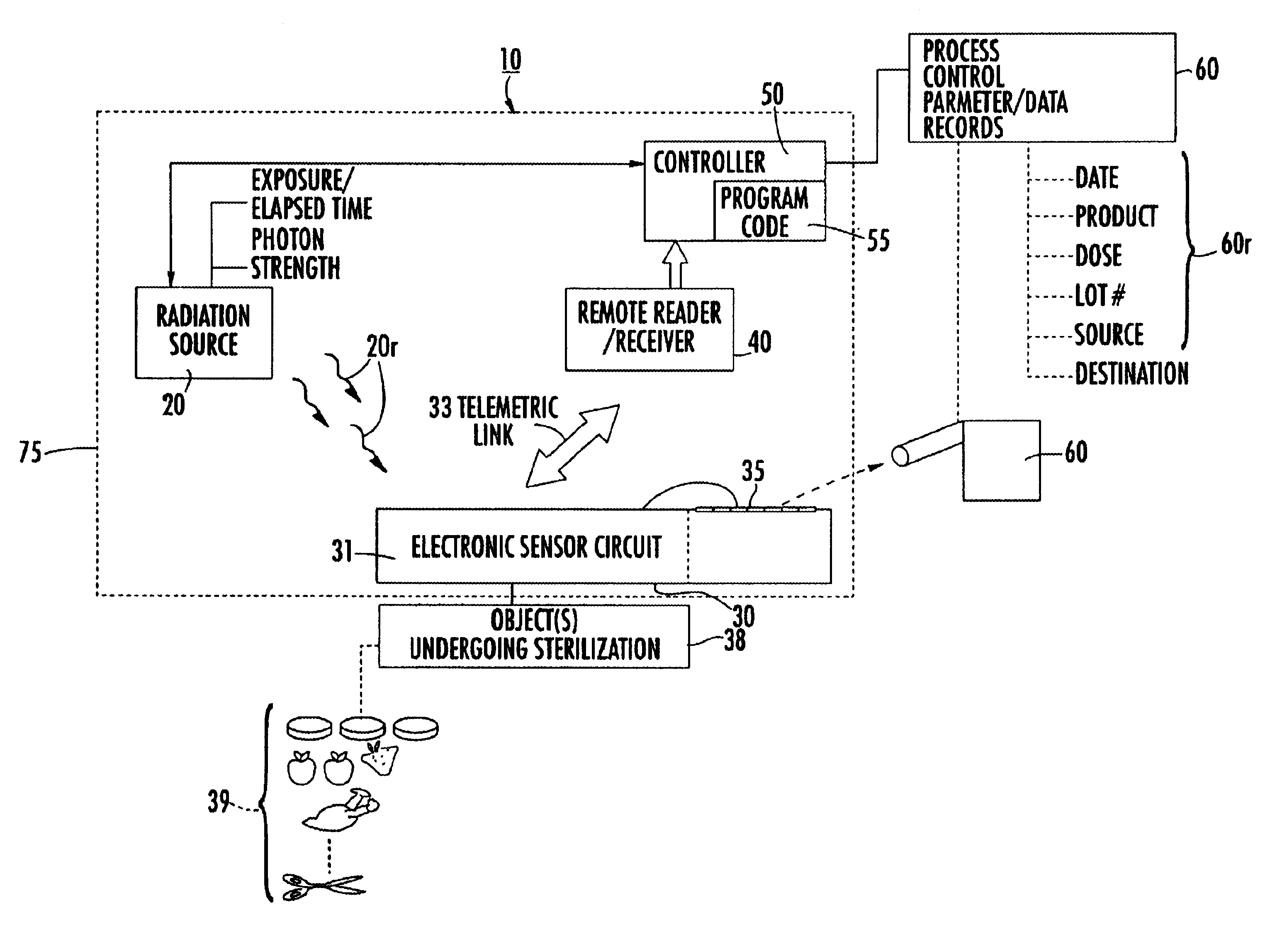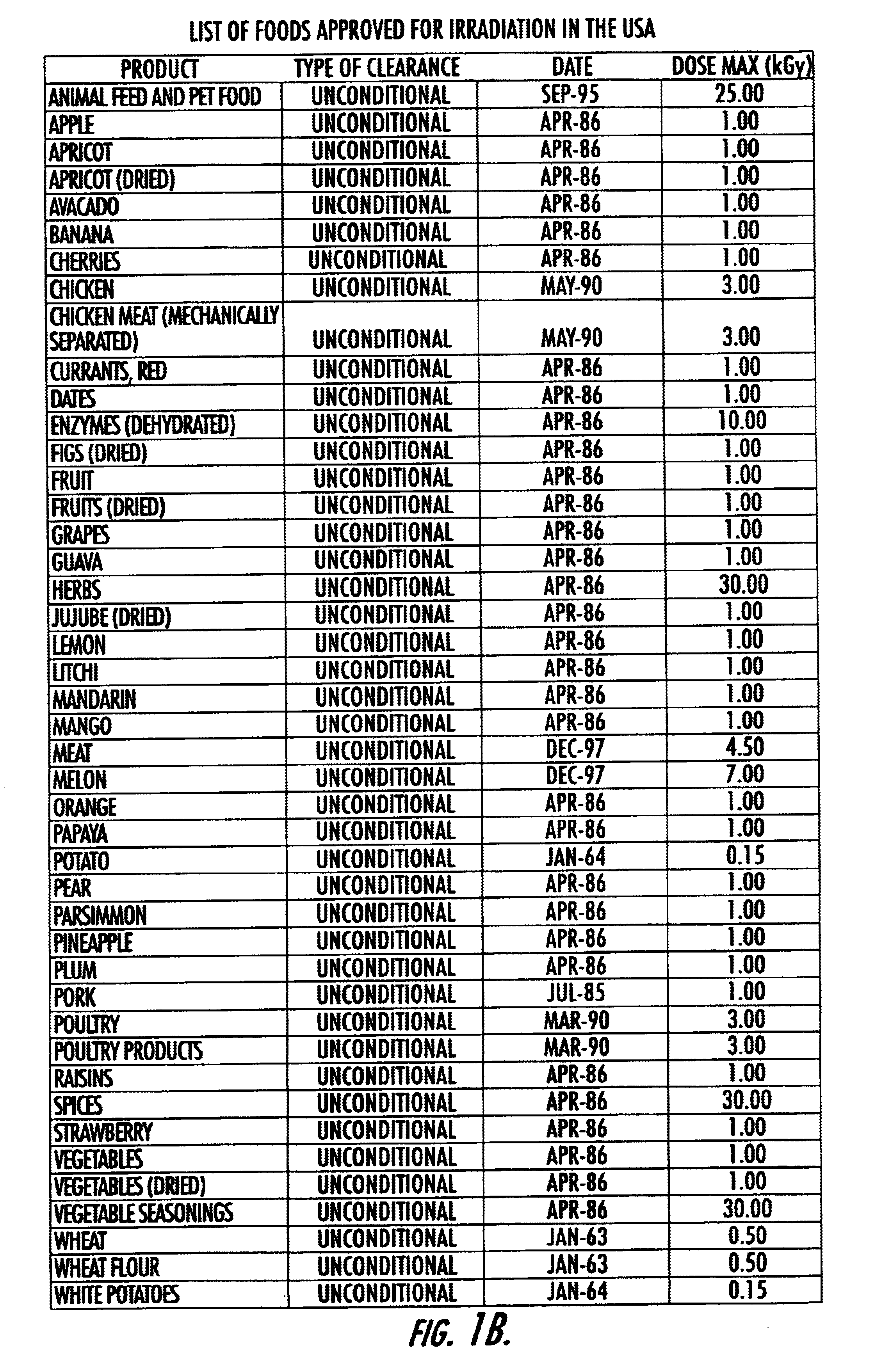Evaluation of irradiated foods and other items with telemetric dosimeters and associated methods
a telemetric and food technology, applied in the field of cost-effective dosimeters, can solve the problems of not being able to guarantee visual inspection, not all foodstuffs are washed or properly cooked before, and unable to provide a food supply that is safe for consumption, etc., to achieve cost-effective, reduce the likelihood of exposure, and reduce the amount of food
- Summary
- Abstract
- Description
- Claims
- Application Information
AI Technical Summary
Benefits of technology
Problems solved by technology
Method used
Image
Examples
Embodiment Construction
The present invention will now be described more fully hereinafter with reference to the accompanying figures, in which preferred embodiments of the invention are shown. This invention may, however, be embodied in many different forms and should not be construed as limited to the embodiments set forth herein. Like numbers refer to like elements throughout. In the figures, layers, regions, or components may be exaggerated for clarity.
Generally described, the present invention provides economical systems, computer products, and methods to estimate, determine, measure, and / or quantify radiation exposure by and / or the amount of radiation which is transmitted to an object (or a plurality of objects) in situ by detecting a change in a selected electronic parameter(s). The value of the change in the selected parameter may be wirelessly or telemetrically relayed to a remote or proximate reader / receiver. The reader can input the data associated with the parameter into a signal processor, con...
PUM
 Login to View More
Login to View More Abstract
Description
Claims
Application Information
 Login to View More
Login to View More - R&D
- Intellectual Property
- Life Sciences
- Materials
- Tech Scout
- Unparalleled Data Quality
- Higher Quality Content
- 60% Fewer Hallucinations
Browse by: Latest US Patents, China's latest patents, Technical Efficacy Thesaurus, Application Domain, Technology Topic, Popular Technical Reports.
© 2025 PatSnap. All rights reserved.Legal|Privacy policy|Modern Slavery Act Transparency Statement|Sitemap|About US| Contact US: help@patsnap.com



